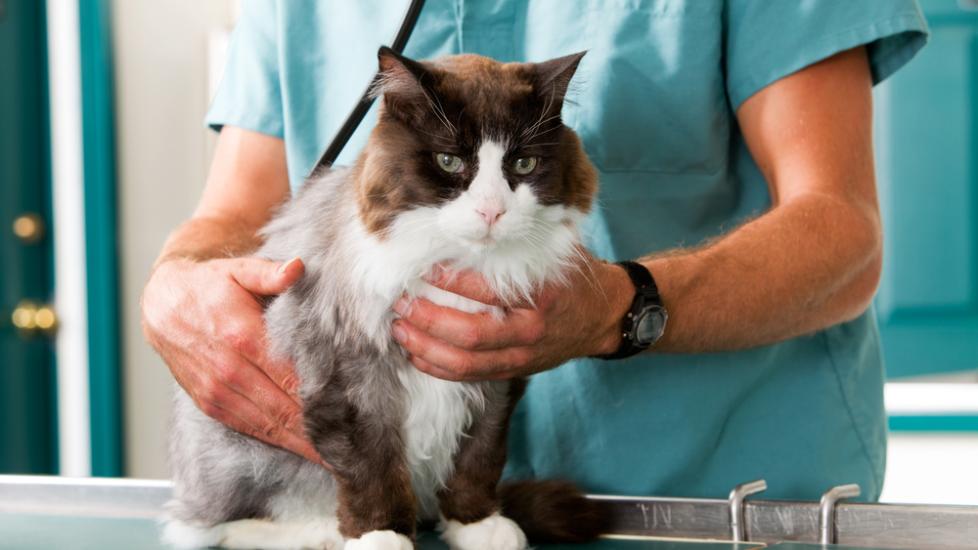Foot/Toe Cancer in Cats
Digital Squamous Cell Carcinoma in Cats
Cats can be afflicted with several types of skin tumors, even on their feet and toes. One type of tumor that can affect the toes is a squamous cell carcinoma. A squamous cell carcinoma (SCC) can be described as a malignant and particularly invasive tumor that takes hold in the scale like cells of the epithelium – the tissue that covers the body or lines the cavities of the body. These scale like tissue cells are called the squamous.
Carcinoma is, by definition, an especially malignant and persistent form of cancer, often returning after is has been excised from the body and metastasizing to other organs and locations on the body. This particular type of carcinoma is a slow moving one, and is typically caught before it has had a chance to spread.
However, there is usually a squamous cell carcinoma somewhere else on the skin that spreads to the toes in this case, and more than one toe is usually affected. It may appear as a small nodule, a reddish colored skin plaque, or as a papule – small and blister like in appearance, but differentiated by its lack of fluid. The SCC does not retain its appearance as a solid mass. Over time it will grow, the tissue within the mass will die (necrotize), and the tumor will ulcerate. While this form of cancer can affect any breed of cat, it remains a rare type of foot cancer in cats.
Symptoms and Types
- Swollen toes or feet
- Limping or not wanting to move around
- Ulcers (sores) on several toes
- Bleeding ulcers on the toes
- Solid, raised mass of skin on the toe (i.e., nodule, papule)
- Sores or tumors on other parts of the body
- May be without other symptoms
Causes
Squamous cell carcinomas on the toe typically occur as the result of metastasis of other tumors that have spread from another location on the cat's body.
Diagnosis
You will need to provide a thorough history of your cat's health leading up to the onset of symptoms. Be sure to describe any sores that have been apparent on other parts of the body, even if you suspect they were caused by injuries resulting from outdoor activity, or from scratching at the skin. During the examination, your veterinarian will look carefully for other sores or tumors on your cat's body. The lymph nodes will be carefully felt to determine if they are enlarged, an indication that the body is reacting to an infection or invasion. A sample of lymph fluid may be taken to test for cancerous cells. Your veterinarian will order complete blood count and biochemistry profile to make sure your cat's other organs are working normally and to determine whether the white blood cell count is higher than normal; again, an indication that the body is fighting an invasive disease or infection.
X-rays images of your cat's chest will allow your veterinarian to visually inspect the lungs for signs of any abnormalities, especially tumors. X-rays of your cat's foot will also be ordered to determine how deep the tumor is in the tissue and whether the tumor on the toe has spread to the bones in the foot. A biopsy will be taken of the tumors so that your doctor can diagnose the specific type of growth it is, whether carcinoma or a benign mass of tissue. If your cat has sores or tumors in other areas, your veterinarian will also order biopsies of these for analysis.
Treatment
Treatment will depend on how many tumors or sores your cat has and whether or not they have spread to other areas of the body. If your cat has only one tumor on one toe, it will most likely be treated with surgery. To be sure that all of the carcinoma is removed, the toe with the tumor will be removed entirely (amputated). Most cats recover well from this type of surgery and are able to walk normally afterwards.
If your cat has multiple tumors on its feet, or if there are tumors in other areas as well, surgery may not be a practical option. Your veterinarian will prescribe medication to help minimize your cat's pain, and in some cases, your veterinarian may recommend a veterinary cancer specialist so that you can determine if there are other viable treatment options.
Living and Management
If your cat has had surgery to remove a toe, it may limp a little and have some pain in its foot afterwards. Pain medication will help your cat to move through the transition, and its activity may need to be limited until it has completely recovered from the surgery. Otherwise, once it has recovered, your cat should not have any difficulty compensating quickly for the lost digit. If the tumor was limited to one spot and had not metastasized to other parts of the body, a full recovery can be expected. While this type of cancer has a good chance of not recurring, as with any cancer, it is recommended that you take your cat for regular progress checks with your veterinarian.
Image: Tyler Olson via Shutterstock
